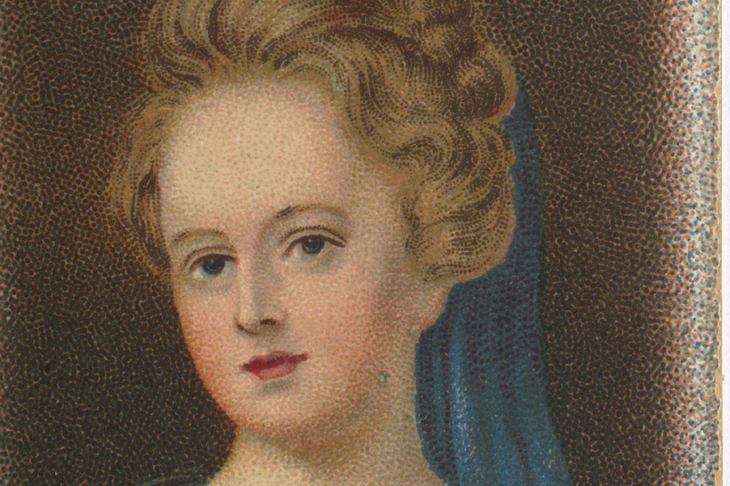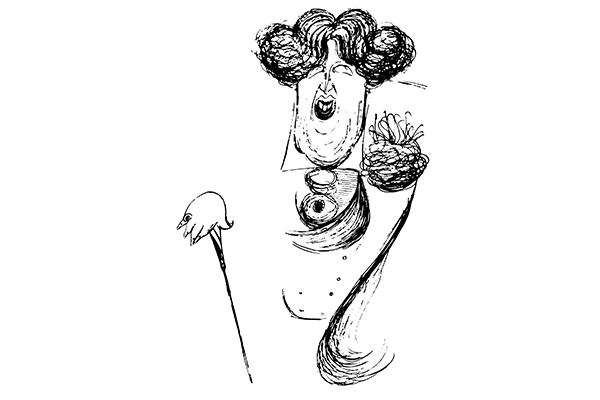Never judge a book by its cover. To look at, this is a coffee-table book with shiny pages which make it too heavy to take on Ryanair, but that does it a disservice. In reality it is a shrewdly observed and engagingly written account of a neglected subject — the royal household.
Tinniswood takes a long view, beginning with Elizabeth I, and one of the points he makes concerns the unchanging nature of monarchy. Both Elizabeth I and Elizabeth II needed to put on a display of magnificence, for example, but both were also aware that out-of-control costs spelt trouble with Parliament.
The chief cause of ballooning costs for the Tudors and Stuarts was that too many people were living at Court at the monarch’s expense. In Charles II’s day, the Palace of Whitehall resembled a vast, sprawling and rather dirty apartment complex. It stank of drink. No one knew exactly who or how many people lived there, and the courtiers took to riotous partying in the private galleries, which annoyed the king who expected them to appear at Court. In 1698 the Palace of Whitehall burnt down, and top courtiers and ministers ceased to live cheek-by-jowl with the king. William and Mary disliked London, and they lived at Hampton Court and Kensington Palace.
One of the enduring questions is how much should the sovereign engage with his or her subjects. Elizabeth I made rare appearances which were expertly stagemanaged by her household so that she seemed like a goddess and everyone fell on their knees as she walked past. Charles II ignored advice to do the same, and he carried out almost every action in public. The birth of a royal infant was a public event. At the birth of the son of James II, almost 40 people were milling about, listening to the Queen as she shrieked in agony. The story that the baby was smuggled into her bed in a warming pan was fake news, invented by the Whigs.
Most powerful of all household members was Sarah Churchill, the manipulative monster who was Mistress of Robes to Queen Anne. The story of their intense (but probably platonic) friendship is well told here. Reading about the quarrels and petty vanity of the first two Georges makes one wonder how they ever kept hold of the throne.
On the madness of George III we are spared no detail. The king became foul-mouthed and sexually disinhibited; he ran naked into the queen’s room and tried to throw her on the bed, and he tried to assault his daughter. Nowadays he would have been sectioned immediately. The royal doctors issued untrue bulletins and jostled for position with their professional rivals, and poor George III was cruelly treated — today we would say abused — by the mad doctor Willis.
After the lurid goings-on of the Hanoverians, Queen Victoria and the virtuous Prince Albert are a bit of a come down. The worst Victoria did was to fall platonically in love with her Highland servant John Brown — which was nothing by comparison with Queen Anne’s hysterical obsession with Sarah Churchill.
The 20th century saw the rise of the private secretary, who became the most important office holder at Court. The system worked perfectly under George V, who was served by two great private secretaries, Lord Stamfordham (Arthur Bigge) and Clive Wigram. They were known to the royal children as Biggy and Wiggy. Just how powerful the private secretaries had become was demonstrated in the short reign of Edward VIII, when the defection of both Alec Hardinge and Tommy Lascelles left the king powerless and isolated in the final weeks of his reign.
In recent times, however, the household has become rather a liability because of its members’ habit of leaking. The first household member to publish insider information was Marion Crawford (Crawfie), governess to the Queen and Princess Margaret, whose book The Little Princesses was an instant bestseller. In spite of the royal code of secrecy, indiscretions continued to trickle out, and since Diana’s death a flood of memoirs by her servants has appeared.
This book is a cracking read, packed full of stories which Tinniswood relates with verve and wit. He picks up the sort of details one wants to know, relating for instance how Elizabeth I modestly retreated behind a canopy when she sat on her close stool or chamberpot, while Henry VIII was watched by the groom of the stool. Tinniswood has an excellent ear for gossip, but he doesn’t lose sight of the bigger picture, and there are lots of nuggets of new research. Buy this book for Christmas and give it to all your non-republican friends.
Got something to add? Join the discussion and comment below.
Get 10 issues for just $10
Subscribe to The Spectator Australia today for the next 10 magazine issues, plus full online access, for just $10.
You might disagree with half of it, but you’ll enjoy reading all of it. Try your first month for free, then just $2 a week for the remainder of your first year.














Comments
Don't miss out
Join the conversation with other Spectator Australia readers. Subscribe to leave a comment.
SUBSCRIBEAlready a subscriber? Log in